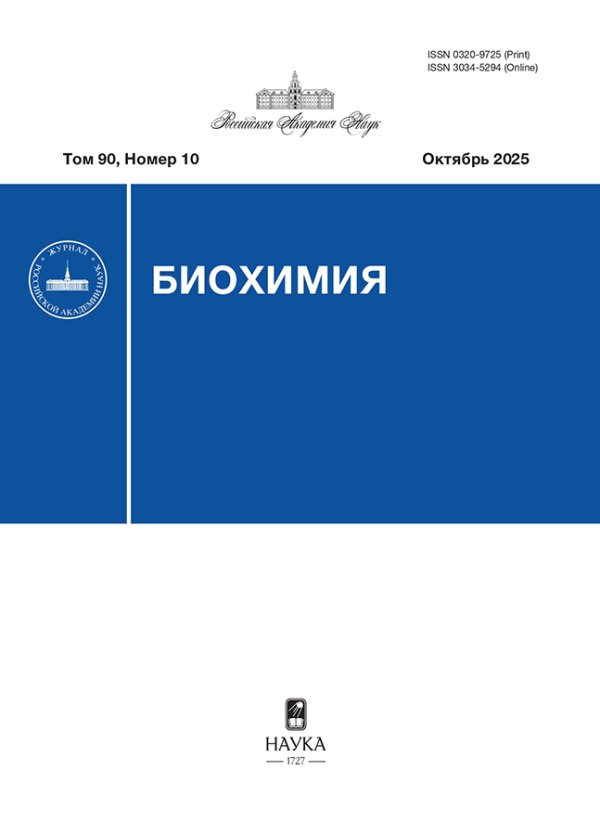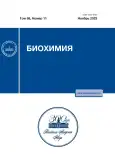Actuarial aging rates in human cohorts
- Authors: Gavrilov L.A1,2, Gavrilova N.S1,2
-
Affiliations:
- NORC at the University of Chicago
- Institute for Demographic Research, Federal Center of Theoretical and Applied Sociology, Russian Academy of Sciences
- Issue: Vol 88, No 11 (2023)
- Pages: 2156-2165
- Section: Articles
- URL: https://journals.rcsi.science/0320-9725/article/view/233507
- DOI: https://doi.org/10.31857/S0320972523110106
- EDN: https://elibrary.ru/MLPLLP
- ID: 233507
Cite item
Full Text
Abstract
About the authors
L. A Gavrilov
NORC at the University of Chicago;Institute for Demographic Research, Federal Center of Theoretical and Applied Sociology, Russian Academy of Sciences
Email: lagavril@yahoo.com
60637 Chicago, IL, USA;109028 Moscow, Russia
N. S Gavrilova
NORC at the University of Chicago;Institute for Demographic Research, Federal Center of Theoretical and Applied Sociology, Russian Academy of Sciences60637 Chicago, IL, USA;109028 Moscow, Russia
References
- Gavrilov, L. A., and Gavrilova, N. S. (1991) The Biology of Life Span: A Quantitative Approach, Harwood Academic Publisher, New York.
- Gavrilov, L. A., and Gavrilova, N. S. (2022) Trends in human species-specific lifespan and actuarial aging rate, Biochemistry (Moscow), 87, 1998-2011, doi: 10.1134/S0006297922120173.
- Tai, T. H., and Noymer, A. (2018) Models for estimating empirical Gompertz mortality: with an application to evolution of the Gompertzian slope, Popul. Ecol., 60, 171-184, doi: 10.1007/s10144-018-0609-6.
- Gavrilov, L. A., and Gavrilova, N. S. (2006) Reliability Theory of Aging and Longevity in Handbook of the Biology of Aging (Masoro, E. J., and Austad, S. N., eds) 6 Edn., Academic Press, San Diego, pp. 3-42, doi: 10.1016/B978-012088387-5/50004-2.
- Mikhalsky, A. I. (2023) On the Paper by Leonid A. Gavrilov and Natalia S. Gavrilova entitled "Trends in Human Species-Specific Lifespan and Actuarial Aging Rate" Published in Biochemistry (Moscow), Vol. 87, Nos. 12-13, pp. 1622-1633 (2022), Biochemistry (Moscow), 88, 162-163, doi: 10.1134/S0006297923010145.
- Bongaarts, J. (2005) Long-range trends in adult mortality: Models and projection methods, Demography, 42, 23-49, doi: 10.1353/dem.2005.0003.
- Bongaarts, J. (2009) Trends in senescent life expectancy, Popul. Stud. (Camb), 63, 203-213, doi: 10.1080/00324720903165456.
- Gavrilov, L. A., Gavrilova, N. S., and Nosov, V. N. (1983) Human life span stopped increasing: why? Gerontology, 29, 176-180, doi: 10.1159/000213111.
- Horiuchi, S. (1997) Postmenopausal acceleration of age-related mortality increase, J. Gerontol. A Biol. Sci. Med. Sci., 52, B78-B92, doi: 10.1093/gerona/52A.1.B78.
- Li, T., Yang, Y. C., and Anderson, J. J. (2013) Mortality increase in late-middle and early-old age: heterogeneity in death processes as a new explanation, Demography, 50, 1563-1591, doi: 10.1007/s13524-013-0222-4.
- Tarkhov, A. E., Menshikov, L. I., and Fedichev, P. O. (2017) Strehler-Mildvan correlation is a degenerate manifold of Gompertz fit, J. Theor.Biol., 416, 180-189, doi: 10.1016/j.jtbi.2017.01.017.
- Human Mortality Database. University of California, Berkeley (USA), and Max Planck Institute for Demographic Research (Germany), URL: https://www.mortality.org (accessed on 6.5.2022).
- Golubev, A. (2019) A 2D analysis of correlations between the parameters of the Gompertz-Makeham model (or law?) of relationships between aging, mortality, and longevity, Biogerontology, 20, 799-821, doi: 10.1007/s10522-019-09828-z.
- Strehler, B. L., and Mildvan, A. S. (1960) General theory of mortality and aging, Science, 132, 14-21, doi: 10.1126/science.132.3418.14.
- Gavrilov, L. A., Gavrilova, N. S., and Yaguzhinsky, L. S. (1978) The main patterns of aging and death of animals from the point of view of the theory of reliability [in Russian], J. Gen. Biol., 39, 734-742.
- Gavrilov, L. A., and Gavrilova, N. S. (2023) On the Commentary by Anatoly I. Mikhalsky Published in Biochemistry (Moscow), Vol. 88, No. 1, pp. 162-163 (2023), Biochemistry (Moscow), 88, 289, doi: 10.1134/S0006297923020116.
- Ho, J. Y., and Hendi, A. S. (2018) Recent trends in life expectancy across high income countries: retrospective observational study, Br. Med. J., 362, k2562, doi: 10.1136/bmj.k2562.
- Gavrilov, L. A., and Gavrilova, N. S. (2001) The reliability theory of aging and longevity, J. Theor. Biol., 213, 527-545, doi: 10.1006/jtbi.2001.2430.
- Olovnikov, A. M. (2022) Planetary metronome as a regulator of lifespan and aging rate: the metronomic hypothesis, Biochemistry (Moscow), 87, 1640-1650, doi: 10.1134/S0006297922120197.
- Gavrilova, N. S., Gavrilov, L. A., Severin, F. F., and Skulachev, V. P. (2012) Testing predictions of the programmed and stochastic theories of aging: comparison of variation in age at death, menopause, and sexual maturation, Biochemistry (Moscow), 77, 754-760, doi: 10.1134/S0006297912070085.
Supplementary files










